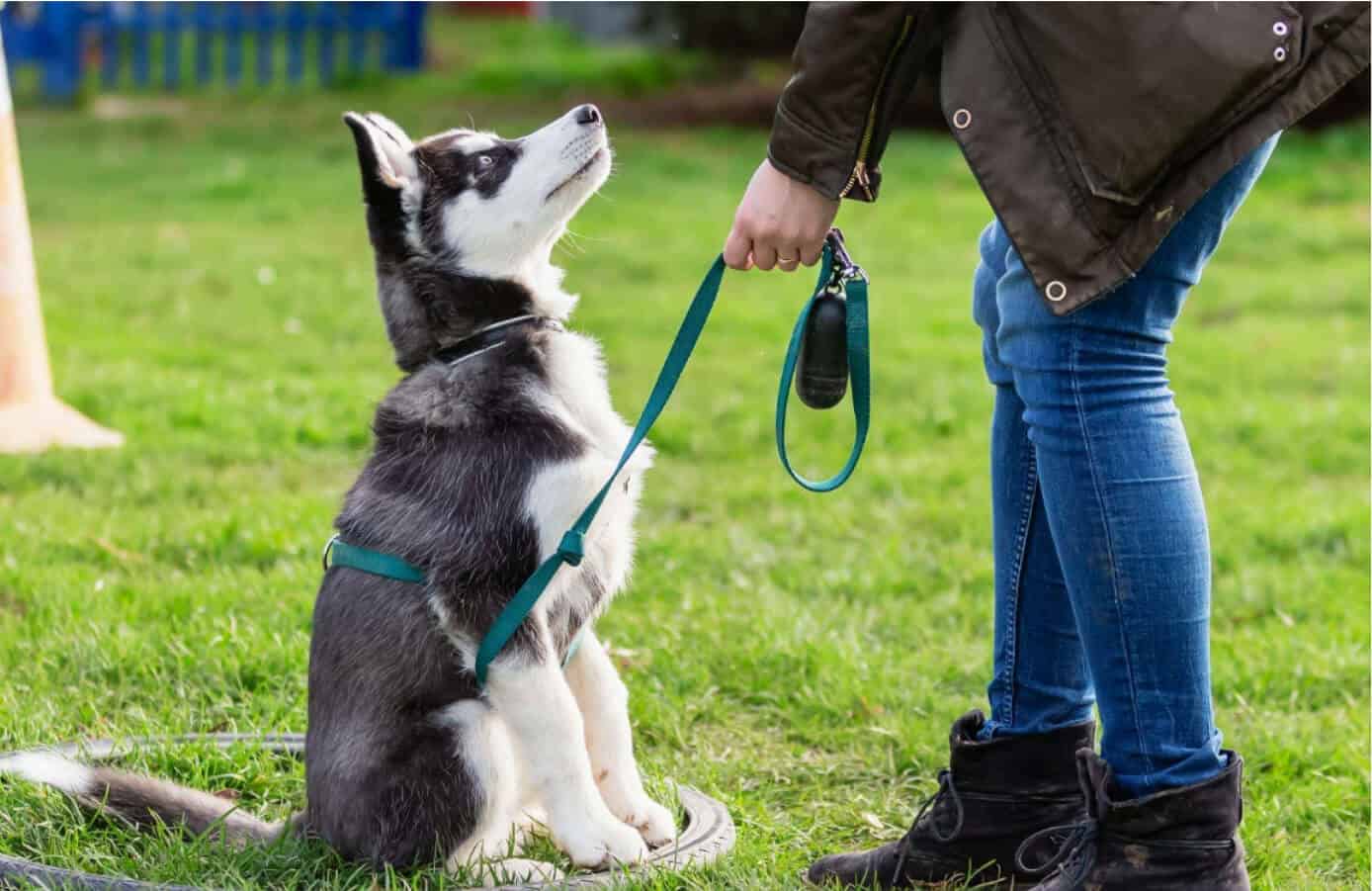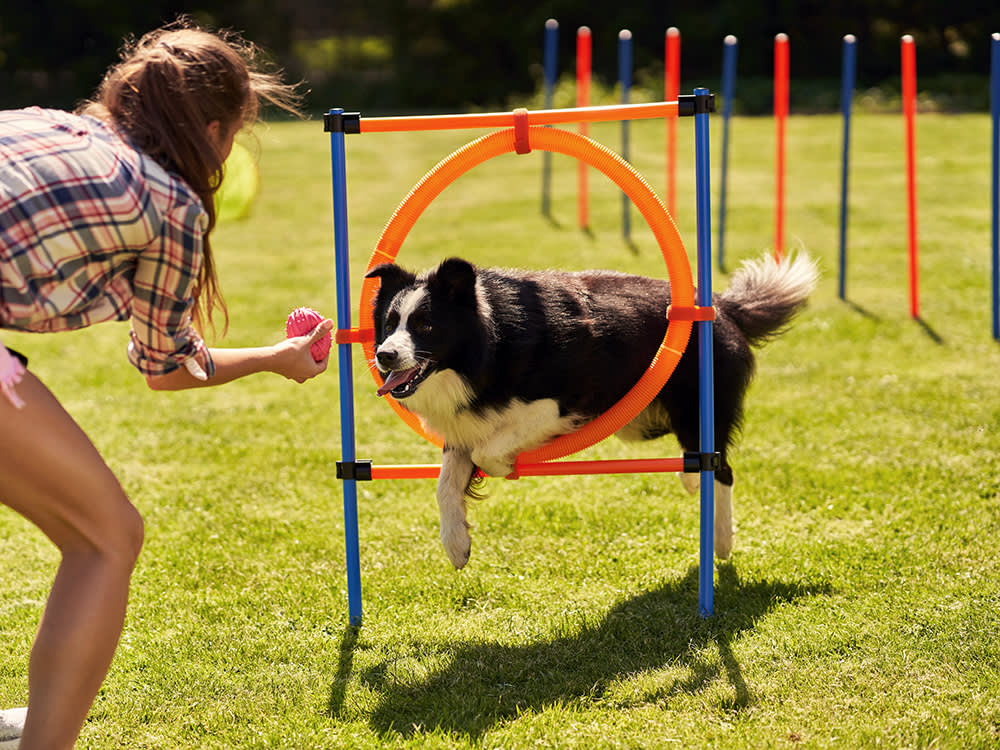Recognizing Dog Body Movement During Dog Training
Recognizing Dog Body Movement During Dog Training
Blog Article
Necessary Tips for Successful Dog Training: An Overview for Pet Dog Owners
Effective pet training is a complex procedure that requires a tactical method customized to both the animal's personality and the owner's goals. Trick elements such as developing regular commands, utilizing positive reinforcement, and helping with early socialization play vital roles in cultivating a well-adjusted canine companion. However, several pet dog proprietors experience challenges that can impede progress, causing aggravation and unpredictability. Recognizing exactly how to navigate these obstacles can significantly boost the training experience, inevitably changing the partnership between owner and dog. What are the important strategies that can be utilized to guarantee success in this venture?
Comprehending Canine Habits
Understanding pet dog actions is essential for efficient training and fostering an unified relationship in between dogs and their owners. dog training. Dogs communicate largely via body language, articulations, and activities, making it crucial for owners to interpret these signals precisely.

Socializing plays a considerable function in dog actions; direct exposure to various atmospheres, people, and other animals can significantly affect a pet's character. Furthermore, aspects such as type characteristics and individual character should guide training techniques, as some types might have specific behavioral attributes that require customized techniques. By comprehending these elements, owners can produce an encouraging atmosphere that urges favorable actions, resulting in effective training end results and a deeper bond with their pets.
Establishing Consistent Commands
Reliable interaction with your canine starts with developing consistent commands. This fundamental component of training is important for promoting understanding in between you and your pet. Uniformity in the commands you utilize guarantees that your pet dog can reliably associate certain words or phrases with the wanted actions.
When selecting commands, select clear, distinctive words that are simple to differentiate and claim from one another. Avoid utilizing similar-sounding commands that may perplex your pet. Using "rest" and "remain" is appropriate, but "rest" and "hit" might lead to misunderstandings.
Furthermore, preserve the same tone and quantity for each and every command. Pets are delicate to singing signs, so varying your tone can develop complication.
It is similarly important to ensure that all member of the family are on the exact same web page concerning the commands used. A united front in command usage will certainly prevent combined signals and reinforce the discovering process.
Positive Support Methods
The power of positive reinforcement in pet training lies in its ability to motivate preferred actions with benefits and praise. This technique is grounded in the concept that actions followed by desirable results are most likely to be repeated. By integrating positive reinforcement into your training routine, you can properly shape your pet's habits in a constructive fashion.
To execute favorable reinforcement, it's important to recognize what inspires your dog, whether it be treats, playthings, or verbal appreciation. When your canine executes a preferred activity, such as remaining on command, quickly award them with a reward or affection. This organization between the command and the favorable result reinforces their understanding.
It's important to timing the incentives correctly; supplying the reinforcement within seconds of the wanted behavior assists your pet make the connection (dog training). Furthermore, description uniformity is key-- make sure that all household members utilize the very same commands and reward systems to prevent complication

Gradually, you can decrease the regularity of deals with as your dog learns the habits, transitioning to commend or recurring rewards. This technique not just cultivates a solid bond in between you and your dog but likewise promotes a favorable learning setting, making educating an enjoyable experience for both.
Socialization and Interaction
Regularly subjecting your pet dog to a selection of settings, individuals, and various other pets is essential for their social development. Socialization ought to begin early, ideally during the vital home window of 3 to 14 weeks, when young puppies are most responsive to brand-new experiences. Nevertheless, older pet dogs can likewise gain from continuous socialization efforts.
Present your pet dog to various settings, such as parks, pet-friendly stores, and urban locations. This direct exposure aids them adjust to different stimuli, decreasing anxiety and fear over at this website responses. Urge favorable communications with other dogs and people, ensuring that these experiences are controlled and secure to cultivate confidence.
Use structured playdates with genteel pet dogs, as this can enhance your pet's social skills and educate them proper behavior. Obedience courses and training sessions likewise give exceptional opportunities for socialization, allowing your pet dog to interact with others in a monitored environment.
Screen your dog's body movement during interactions, as this will certainly help you determine their comfort degree. Gradually boost direct exposure to more tough situations while making sure that each experience declares. A well-socialized pet is more probable to exhibit balanced habits, making them a pleasure to have in any type of setup.
Addressing Typical Training Obstacles
Every dog owner will certainly encounter training difficulties at some time, despite their canine's age or socializing degree. Recognizing common problems such as stubbornness, disturbances, and fearfulness can help in establishing reliable strategies for improvement.

Diversions throughout training sessions can thwart emphasis. To battle this, begin training in a silent setting with minimal stimuli. Gradually introduce distractions as the dog becomes much more skilled in commands. Short, regular training sessions are likewise efficient in preserving interest.
Terror can prevent a pet's discovering procedure. Progressive desensitization to the source of anxiety, coupled with favorable reinforcement, can help reduce anxiety. Perseverance is vital; never ever force a dog into a circumstance that creates distress, as this might intensify the issue.
Eventually, understanding and addressing these common challenges with a structured technique will certainly promote an extra efficient training experience, strengthening the bond between dog and proprietor while promoting reliable discovering.
Conclusion
In recap, successful pet training relies upon an extensive understanding of canine actions, the establishment of consistent commands, and the application of favorable reinforcement methods. Socialization plays a critical function in developing well-adjusted family pets, while addressing typical training challenges needs patience and versatility. By implementing these necessary techniques, pet dog owners can cultivate a strong bond with their canines and advertise desirable habits, inevitably resulting in an unified partnership between people and their canine friends.
Understanding pet dog actions is important for reliable training and cultivating a harmonious connection in between pooches and their owners.Socialization plays a substantial function in pet dog habits; direct exposure to various settings, people, and various other animals can significantly impact a knockout post a dog's character.The power of favorable reinforcement in canine training exists in its capability to encourage desired habits via rewards and appreciation. By including favorable support into your training regimen, you can efficiently form your canine's habits in a constructive way.
In recap, effective pet training counts on a comprehensive understanding of canine habits, the facility of consistent commands, and the application of positive support methods.
Report this page